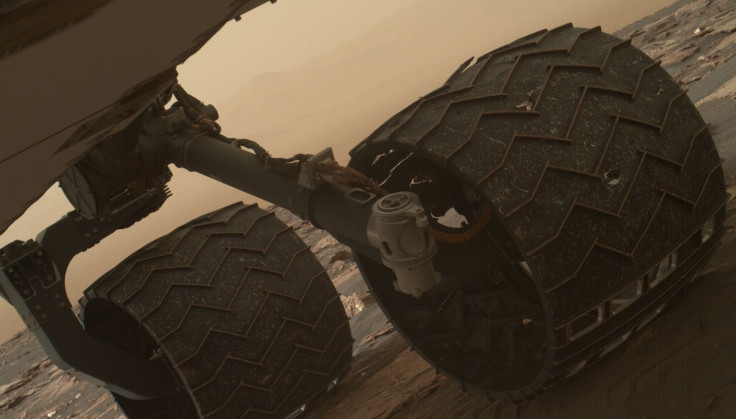NASA's Curiosity Rover Is Starting To Show Its Age

After spending nearly five years on Mars, NASA’s Curiosity rover is finally showing signs of wear and tear. The space agency announced Tuesday that the latest routine check of the rover’s aluminum wheels, carried out Sunday, had revealed two small breaks on the left middle wheel.
However, the damage, which scientists and engineers associated with the project said was an expected part of the wheel’s life cycle, is unlikely to change NASA’s current science plans vis-à-vis the Curiosity mission.
These are the breaks. After 4.5+ off-road years on Mars, my wheel treads show 1st breaks. No prob—lots of wear left. https://t.co/ohlNPi48VN pic.twitter.com/IT1p9Pyvz8
— Curiosity Rover (@MarsCuriosity) March 21, 2017
“All six wheels have more than enough working lifespan remaining to get the vehicle to all destinations planned for the mission,” Curiosity Project Manager Jim Erickson from NASA's Jet Propulsion Laboratory in Pasadena, California, said in a statement released Tuesday. “While not unexpected, this damage is the first sign that the left middle wheel is nearing a wheel-wear milestone.”
Curiosity’s wheels are each about 20 inches in diameter and are made of solid aluminium. Each wheel contains raised treads called grousers — structures that not only bear most of the rover’s weight, but also allow it to traverse uneven and rocky terrain.
“The monitoring of wheel damage on Curiosity, plus a program of wheel-longevity testing on Earth, was initiated after dents and holes in the wheels were seen to be accumulating faster than anticipated in 2013,” NASA said in the statement. “Testing showed that at the point when three grousers on a wheel have broken, that wheel has reached about 60 percent of its useful life. Curiosity already has driven well over that fraction of the total distance needed for reaching the key regions of scientific interest on Mars' Mount Sharp.”
The rover, which landed on Mars in August 2012, is currently less than halfway through its two-year extended mission that commenced October 1. It is currently examining sand dunes partway up a structure called the Murray formation (located on the lower reaches of Mount Sharp), and will, in the coming months, explore the hematite-containing “Vera Rubin Ridge,” a clay-containing geological structure located above that ridge, and a sulfate-containing region above that.
“The rover is climbing to sequentially higher and younger layers of lower Mount Sharp to investigate how the region's ancient climate changed billions of years ago,” NASA said in the statement.
For Curiosity, the Martian adventure is far from over.
© Copyright IBTimes 2024. All rights reserved.





















